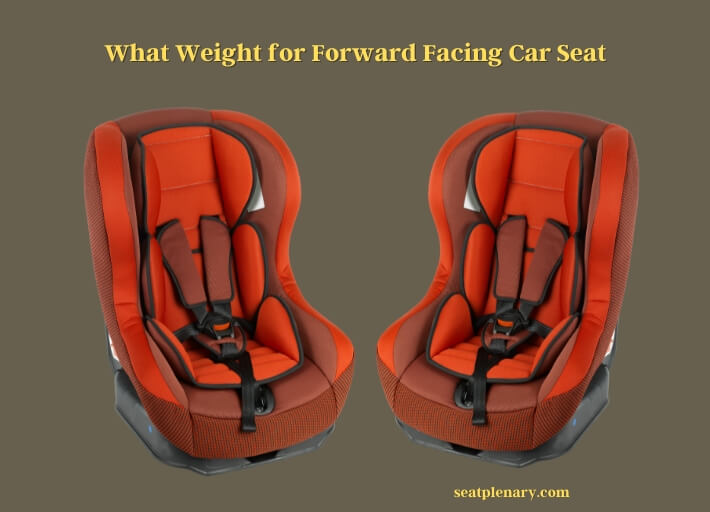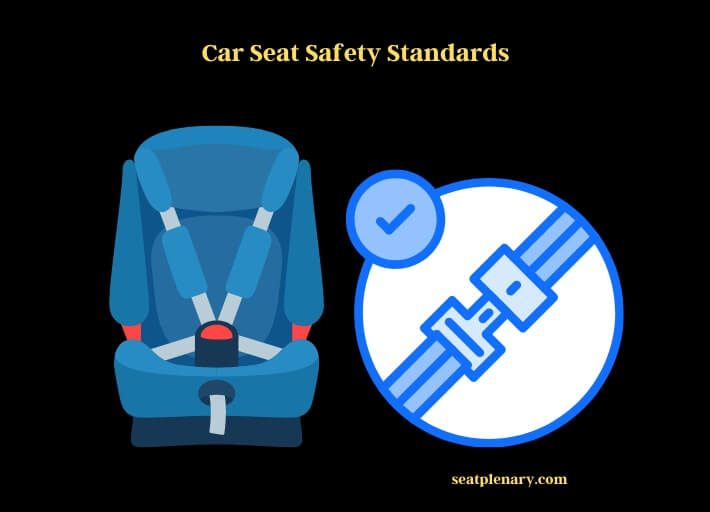The correct weight for a forward-facing car seat generally starts from 20 pounds, yet the child’s height also influences this transition.
The journey of parenthood involves making several decisions for your little ones, among which car safety takes precedence. Every country has guidelines regarding forward-facing car seat requirements. In the United States, for instance, the American Academy of Pediatrics suggests children remain in rear-facing car seats until they reach the highest weight or height allowed by the car seat’s manufacturer. This can sometimes mean that even a 1-year-old could sit in a front-facing car seat, as long as they meet the appropriate weight and height criteria.

Switching from a rear-facing car seat requires more than just age consideration. The weight limit for a rear-facing car seat typically ranges from 40 to 50 pounds. Hence, until a child surpasses this limit, or the maximum height limit specified by the car seat maker, they should stay in the rear-facing seat for optimal protection.
In Canada, it’s suggested that a switch to a forward-facing car seat only occurs once the child outgrows the weight or height limit of a rear-facing seat. Such a regulation reflects the fundamental aim of maximizing child safety during road trips. Remember, every child grows at a different pace. So, always check your car seat’s manufacturer guidelines before making any transitions.
The Transition Point
Most convertible car seats accommodate the transition from rear-facing to forward-facing orientations.
- A convertible car seat can be employed in the rear-facing position until the child reaches the weight limit, typically spanning between 40 to 50 pounds.
- After reaching the weight threshold, the seat can be adjusted and transformed into a forward-facing car seat.
Design and Installation
Convertible car seats come with a design ethos that caters to the safety needs of growing children.
- These seats are larger in size compared to infant car seats, providing ample space for toddlers and preschoolers.
- Another characteristic of convertible car seats is their design for constant installation in the vehicle. They are built to stay put and offer consistent safety standards over the years, making them a preferred choice for parents.
Child’s Growth and Car Seat Orientation
While weight is the crucial factor determining the shift from a rear-facing to forward-facing car seat, it isn’t the only parameter.
- The child’s growth also plays a significant role. If a child has outgrown the height limit of the rear-facing seat before reaching the weight limit, the switch to a forward-facing seat may need to be made sooner.
- It’s necessary to reference the car seat’s manufacturer guidelines regarding the height and weight limits, as these may vary from one model to another.
Safety First
The American Academy of Pediatrics advises that children should remain in the rear-facing position for as long as possible – until they reach the maximum height or weight limit stipulated by the car seat manufacturer.
- This directive aligns with the inherent design of convertible car seats, which allows children to stay in the safer, rear-facing position longer than infant-only seats.
- Transition to a forward-facing seat should only be considered after the child surpasses the defined weight or height limit.

Car Seat Laws by Country
Navigating the diverse landscape of child car seat laws across the globe can be complex. Let’s look at some specific regulations from various countries to provide a snapshot of these legal requirements.
United States
Federal Guidelines
In the U.S., car seat laws vary by state, but the National Highway Traffic Safety Administration provides federal guidelines. Children under the age of 2 or those who haven’t reached the manufacturer’s weight limit should remain in rear-facing seats.
State-Specific Regulations
Some states mandate more specific age, weight, and height requirements for child car seats. Parents are encouraged to check with their local Department of Motor Vehicles for details.
Canada
National Standards
Canada’s car seat laws are uniform across provinces. Children are expected to use a rear-facing car seat until they are at least two years old or until they reach the maximum weight and height limit of the seat.
United Kingdom
Weight and Height-Focused Law
In the UK, car seat law is based on weight and height, rather than age. Children must normally use a child car seat until they’re 12 years old or 135 centimeters tall, whichever comes first.
Australia
Age-Based Legislation
Australia’s car seat laws are age-based. Children should sit in a rear-facing car seat until they are at least six months old. Subsequently, they can switch to a forward-facing seat until they are four years old.
European Union
EU Standards
The EU follows a regulation where children must use child restraint systems suitable for their size and weight. They advise rear-facing car seats for children until they are at least 15 months old.
These laws underscore a global emphasis on child safety during travel, but specifics may vary. Always consult local legislation to ensure compliance and maximum safety.
Some Helpful Videos You Can See Also
Is it time to move to a forward-facing car seat? —
Safe Kids Worldwide
Car Seat Safety By Age: Toddlers in Forward-facing Seats — ChildPassengerSafety
Install Safety 1st Grow and Go forward facing with seat belt and top tether — Tiffany Davis
Frequently Asked Questions (FAQs)
How Long Is a Car Seat Good for in Canada?
In Canada, car seats typically have an expiration date that ranges from 6 to 10 years from the date of manufacture. The specific duration depends on the manufacturer and model of the car seat.
Can My Child Switch to a Front Facing Car Seat in Canada?
Yes, a child can switch to a front-facing car seat in Canada once they’ve outgrown the weight or height limit of their rear-facing seat. The Canadian Pediatric Society advises parents to delay this transition as long as possible for maximum safety.
What Are the Laws Concerning Booster Seats in Canada?
Booster seat laws in Canada generally state that children who have outgrown their forward-facing car seat, usually around 40 lbs or 18 kg, should use a booster seat. They should continue to use the booster seat until they are at least 145 cm tall or 9 years old.
Is There a Specific Canadian Booster Seat Requirement?
Yes, Canadian law requires children to use a booster seat until they are at least 145 cm tall or nine years old, whichever comes first. The child’s ears should not be higher than the vehicle or booster seat’s back when seated.
What Are the Car Seat Rules in Canada?
In Canada, the rules stipulate that children should use rear-facing seats until they are at least two years old or reach the maximum weight or height limit of the car seat. After that, they can use a forward-facing car seat until they outgrow it and then transition to a booster seat.
Why Should a Child Switch to a Forward-Facing Car Seat in Canada?
A child should switch to a forward-facing car seat in Canada once they’ve exceeded the height or weight limit of their rear-facing seat. This transition helps ensure optimal safety while accommodating the child’s growth.
What is the Law for Car Seats in Canada?
The law in Canada mandates that children should stay in rear-facing car seats until they’re at least two years old or have outgrown the weight or height limit. Once they exceed this, they can use a forward-facing seat until they outgrow it and subsequently transition to a booster seat.
Conclusion
The question, “what weight for forward facing car seat?” is crucial for every parent to understand. Keeping your child safe while on the road involves understanding car seat safety standards, choosing the right car seat, installing it correctly, and maintaining it well. Remember, the paramount factor is always your child’s safety, so don’t rush transitions and always adhere to the manufacturer’s guidelines.
Relevant Resources:
